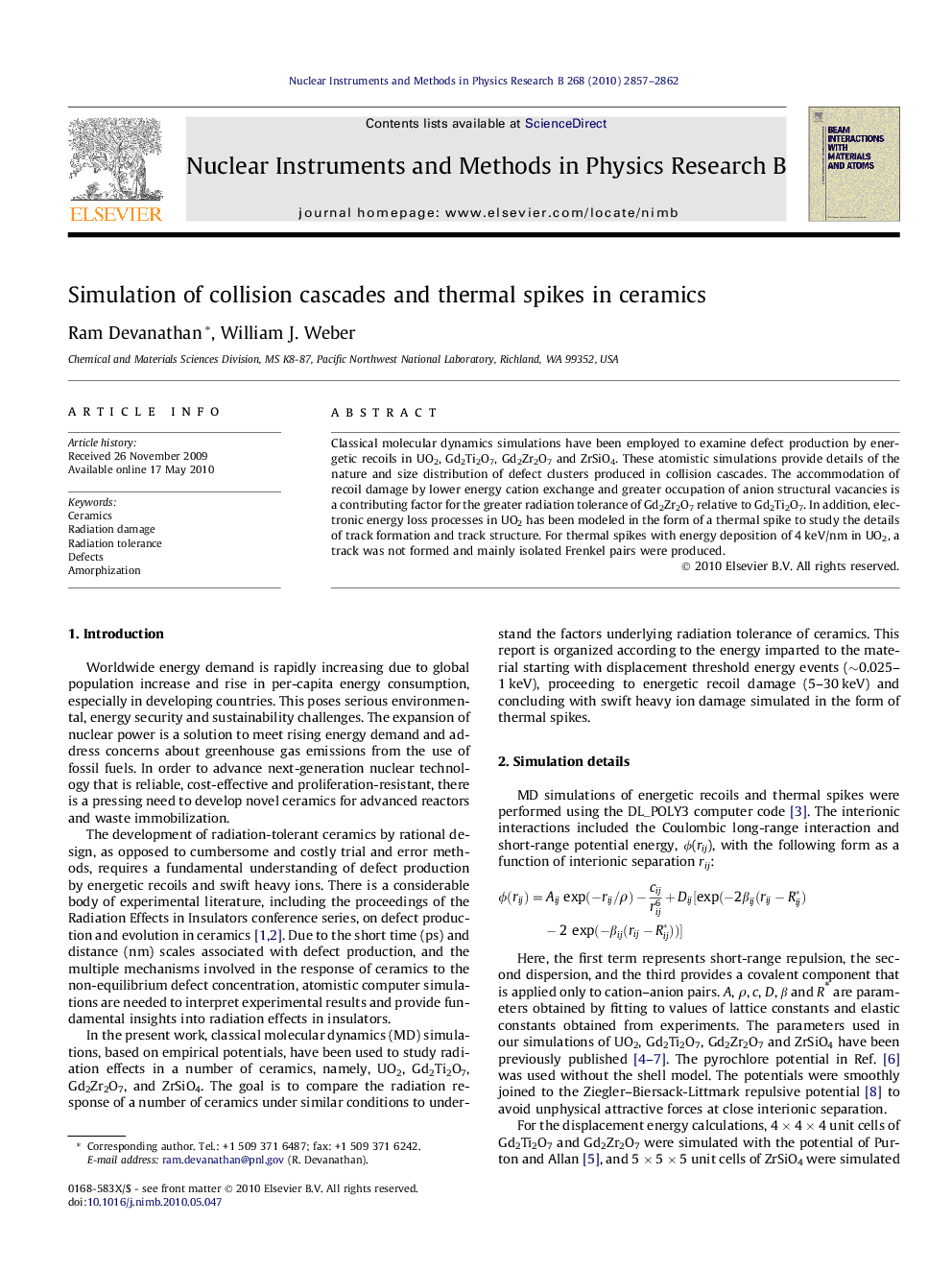| Article ID | Journal | Published Year | Pages | File Type |
|---|---|---|---|---|
| 1681351 | Nuclear Instruments and Methods in Physics Research Section B: Beam Interactions with Materials and Atoms | 2010 | 6 Pages |
Classical molecular dynamics simulations have been employed to examine defect production by energetic recoils in UO2, Gd2Ti2O7, Gd2Zr2O7 and ZrSiO4. These atomistic simulations provide details of the nature and size distribution of defect clusters produced in collision cascades. The accommodation of recoil damage by lower energy cation exchange and greater occupation of anion structural vacancies is a contributing factor for the greater radiation tolerance of Gd2Zr2O7 relative to Gd2Ti2O7. In addition, electronic energy loss processes in UO2 has been modeled in the form of a thermal spike to study the details of track formation and track structure. For thermal spikes with energy deposition of 4 keV/nm in UO2, a track was not formed and mainly isolated Frenkel pairs were produced.
